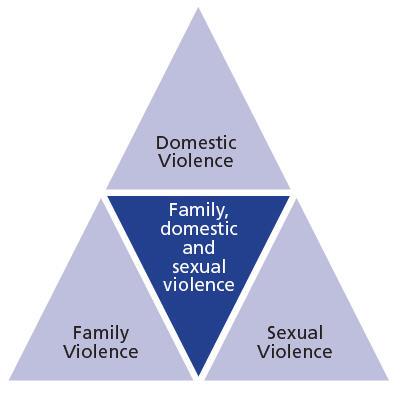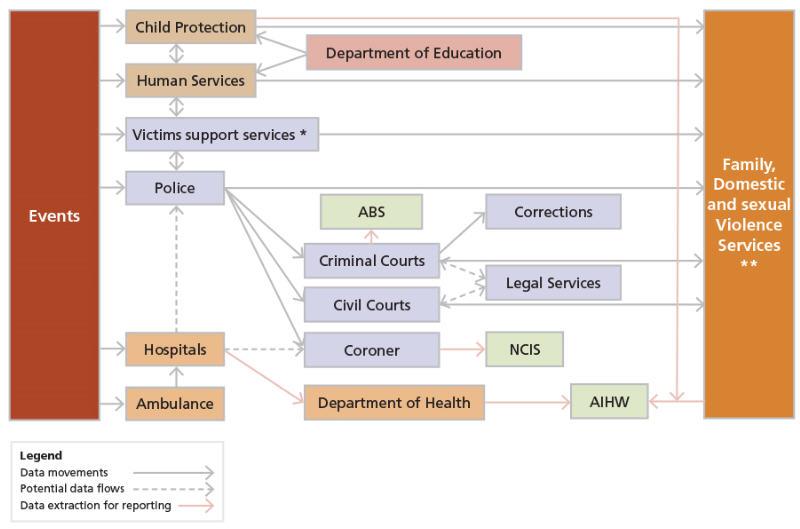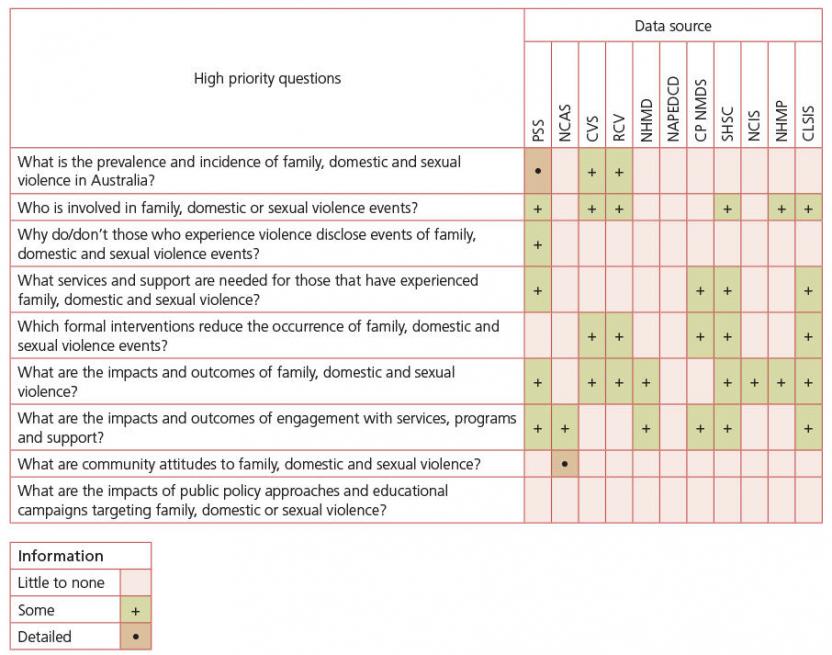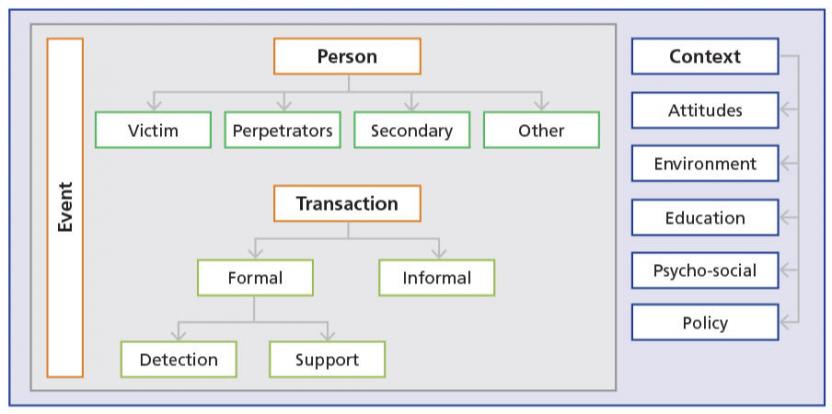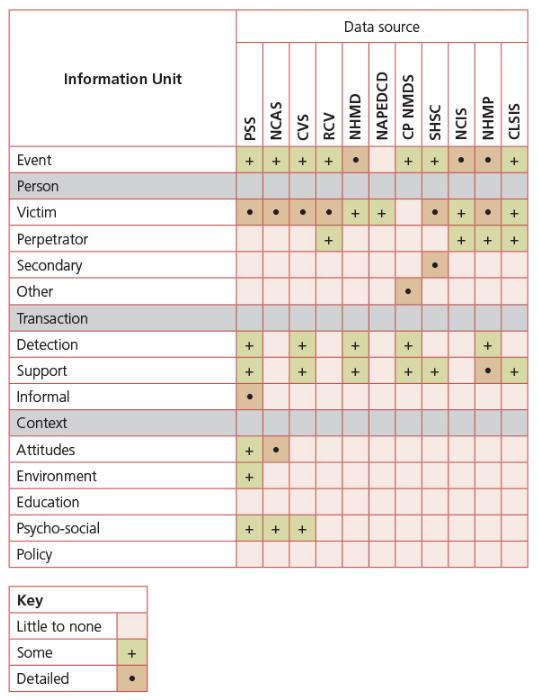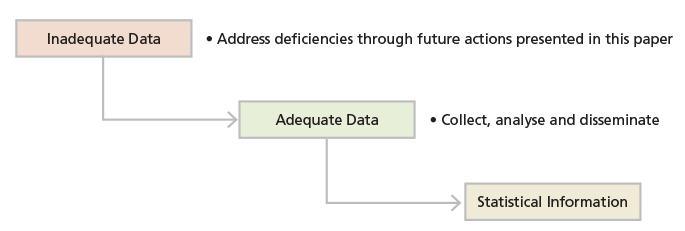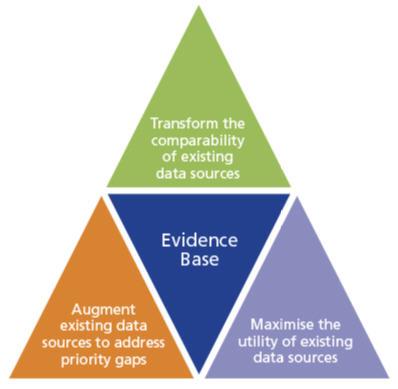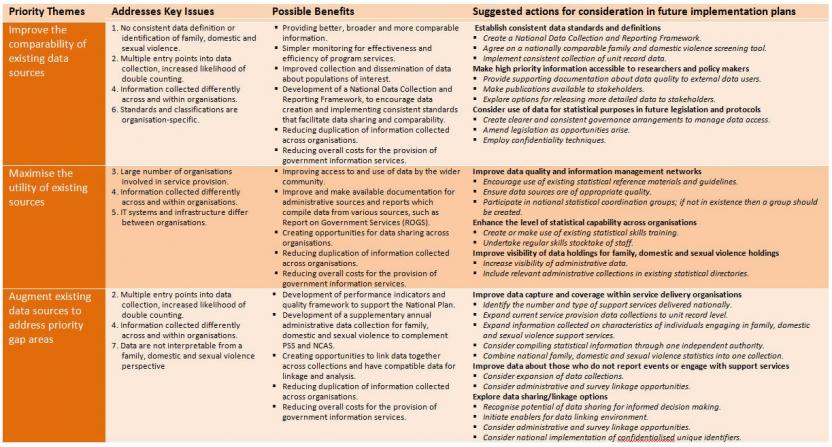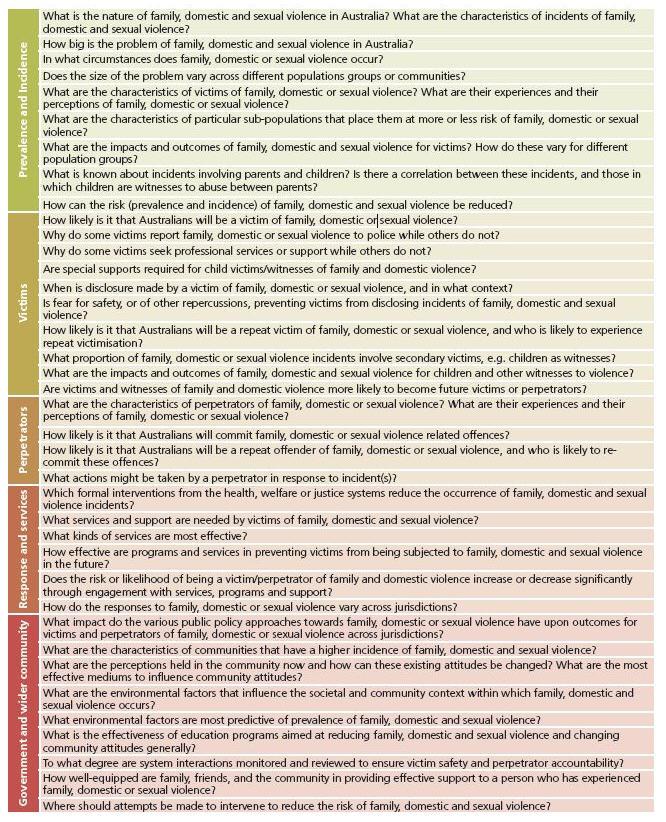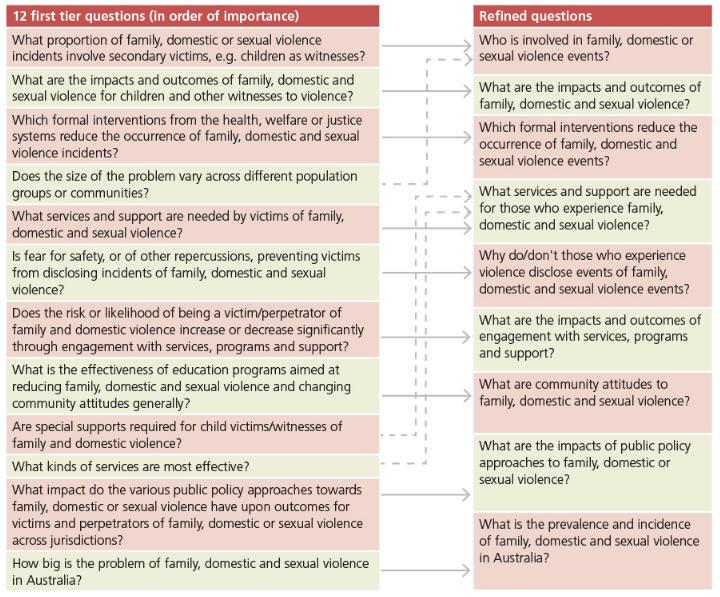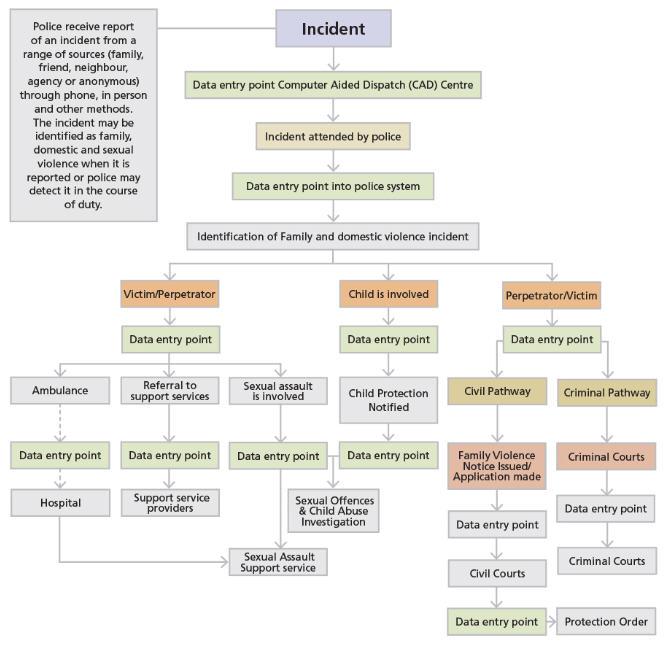Overview
Many Australians are affected by family, domestic and sexual violence each year and the potential adverse effects of these experiences can be long lasting. Results from the crime victimisation survey in 2011-12 estimated that there were 6.4 million incidents of physical or threatened assault in 2011–12 that affected an estimated 1.1 million people (ABS, 2013a).¹
In 2005, it was estimated that 40% of women (3,065,800) and 50% of men (3,744,900) had experienced some form of violence (ABS, 2006).² This survey also estimated that 19.1% of women (1,469,500) and 5.5% (408,100) of men had experienced sexual violence.³ It is difficult to ascertain from the data what proportion of these acts were family and domestic violence events. What is known is, of the 1.7 million people who experienced violence from a current and/or previous partner in their lifetime three quarters were women (76%).⁴ Women were three times more likely than men to experience violence by a current and/or previous partner in their lifetime: 16.6% of women (1,280,000) and 5.7% of men (429,900) (ABS, 2006).
In 2012 it was estimated that 51,000 people aged 18 years and over were victims of sexual assault, and less than a third of these victims reported the incident to police (ABS, 2013a). The low rate of reporting of sexual assault to police is supported by the findings from Recorded Crime, Victims Australia, where police recorded approximately 17,000 victims of sexual assault in 2011 (ABS, 2012).
Acts of violence also attract significant economic costs for the Australian community. It is estimated that violence perpetrated against women alone costs the Australian economy $13.6 billion each year. By 2021 this figure is predicted to increase to $15.6 billion (FaHCSIA, 2009a).
While existing data provide a broad picture of the nature and extent of family, domestic and sexual violence in Australia, there are many aspects of these types of violence that remain unexplored, and questions that remain unanswered. The Council of Australian Governments (COAG) National Plan to reduce violence against women and their children (National Plan) recognises this and is committed to building a strong evidence base. The Commonwealth, states and territories are working together support this through the development of information papers and other tools to assist government and non-government organisations (NGOs) to produce nationally comparable statistics.
The momentum towards developing a sound evidence base in this area mirrors previous trends in demand for robust information to inform government policy in the areas of income, housing, health, education and justice. This process is critical to support governments in monitoring key outcome areas of the National Plan.
¹ Aged 15 years and over.
² Violence includes any incident of: physical assault; physical threat/threatened physical assault; sexual assault and/or; sexual threat/ threatened sexual threat, since the age of 15 years, only asked of respondents 18 years and over.
³ Sexual Violence includes any incident of: sexual assault and/or; sexual threat/ threatened sexual threat, since the age of 15 years, only asked of respondents 18 years and over.
⁴ Current partner is defined as a partner the person is currently living with and includes both married and defacto relationships; ‘Previous partner’ is a partner who the person may or may not have been living with at the time; includes both married and defacto relationships.
Purpose of this publication
The purpose of this publication is to provide an inventory of the current issues for data collection and dissemination in the field of family, domestic and sexual violence statistics. It acknowledges that for some organisations data are collected as a by-product of their day to day operations, and that this poses unique challenges for data improvement activities. It also provides practical next steps to improve the data environment.
This document supports the National Plan by identifying priority themes for data enhancement that can assist in improving the evidence base for family domestic and sexual violence in Australia. It outlines the basis for creating the National Data Collection and Reporting Framework and references the current data environment.
This document aims to:
- present a prioritised list of family, domestic and sexual violence policy and research questions that remain unanswered;
- outline the information flows through organisations that provide services to those affected by family, domestic and sexual violence;
- identify the critical gaps in the existing data and attempt to determine why these exist; and
- provide advice about the strategies and actions required to address the critical data gaps.
The findings presented are expected to:
- contribute to governments’ investment in decision-making processes;
- improve the overall quality of Australia’s official statistical assets;
- enhance the utilisation of these assets; and
- enable effective data integration and comparability.
The allocation of resources to support investments in response to the identified priority themes remains with governments as well as the respective data custodian organisations.
The National Plan - building a strong foundation: the first action plan
The National Plan is a long term approach to reducing violence against women and their children in Australia. It is driven by four action plans designed to support long lasting change. The first action plan, Building a Strong Foundation, is supported by strategic projects and actions that target long term results while delivering on high-priority actions in the short-term. All jurisdictions have agreed to work together to implement the four identified priorities of the first action plan (Diagram 1) (FaHCSIA, 2012).
Diagram 1 - the first action plan to support the National Plan to reduce violence against women and their children
Image
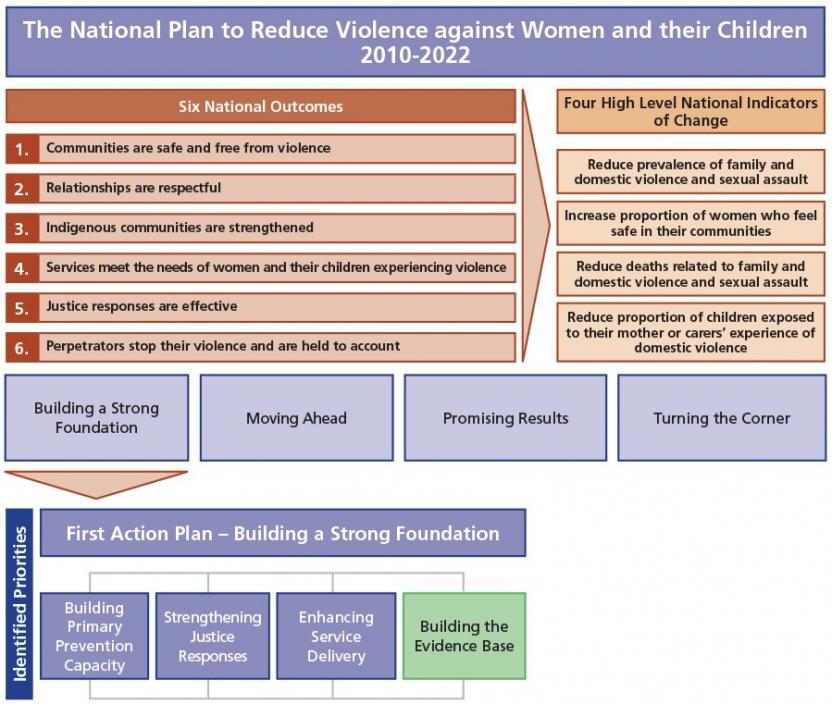
Description
Source: Adapted from the National Implementation Plan: First Action Plan 2010-2013 (FaHCSIA, 2012)
Building the evidence base
The current project is one of many initiatives intended to support this building the evidence base priority area, and it provides the foundations for the creation of a National Data Collection and Reporting Framework (see Diagram 2). This Framework is designed to lay a strong foundation to establish data collection strategies aimed at the production of nationally consistent data. It is accepted that the implementation of such a framework will occur over time and will require agreement from all governments (FaHCSIA, 2012).
Diagram 2 - actions to support the identified priority: building the evidence base
Image
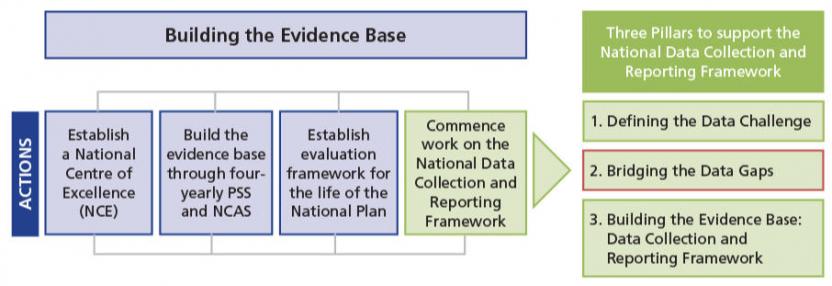
Description
Source: Adapted from the National Implementation Plan: First Action Plan 2010-2013 (FaHCSIA, 2012)
This paper is the second in a series of information papers which outlines the current data environment, identifies critical data gaps, and provides advice to government on the future priority areas for improving statistics for family, domestic and sexual violence in Australia.
